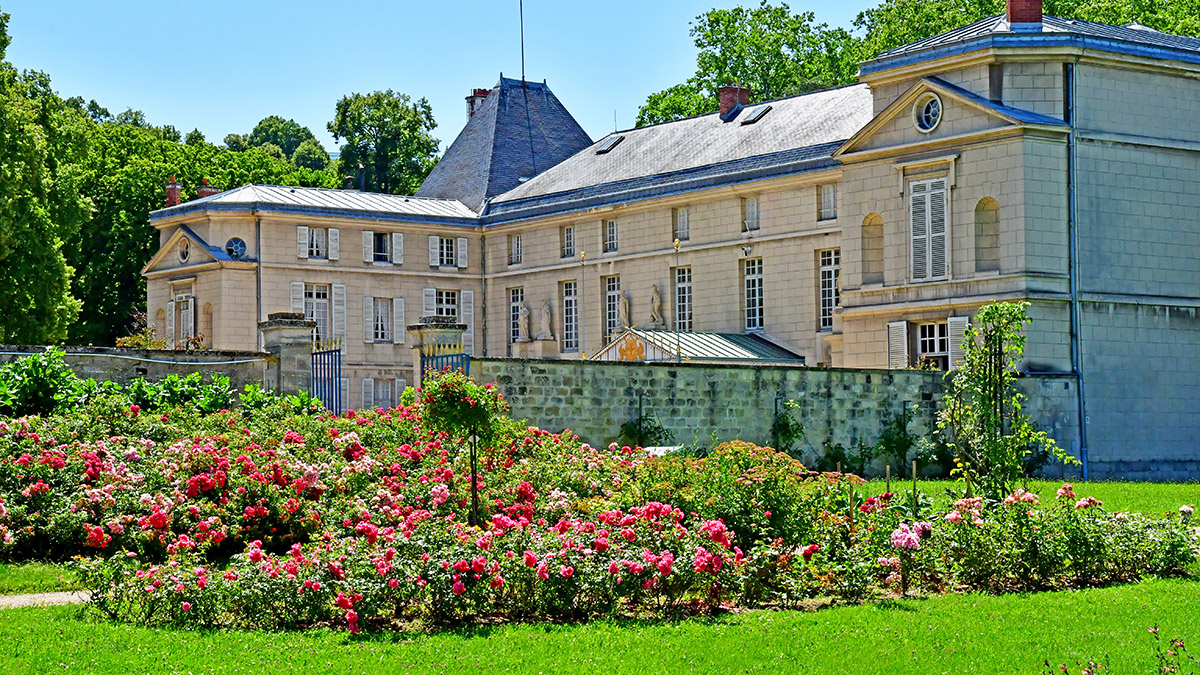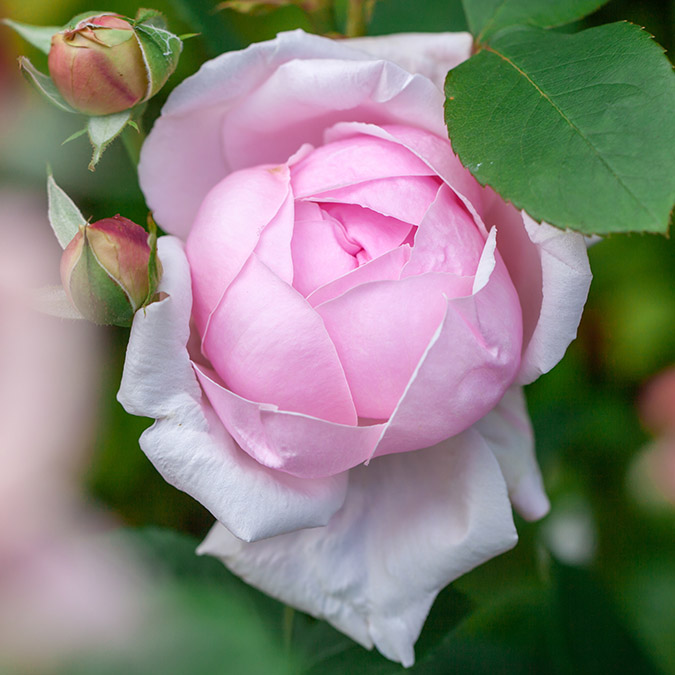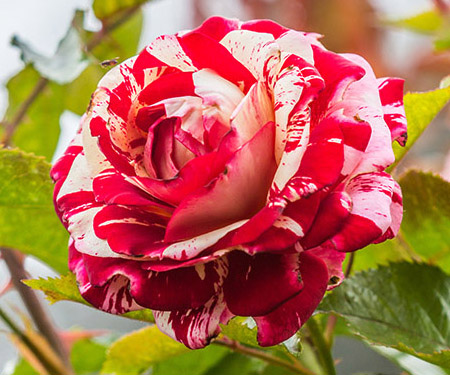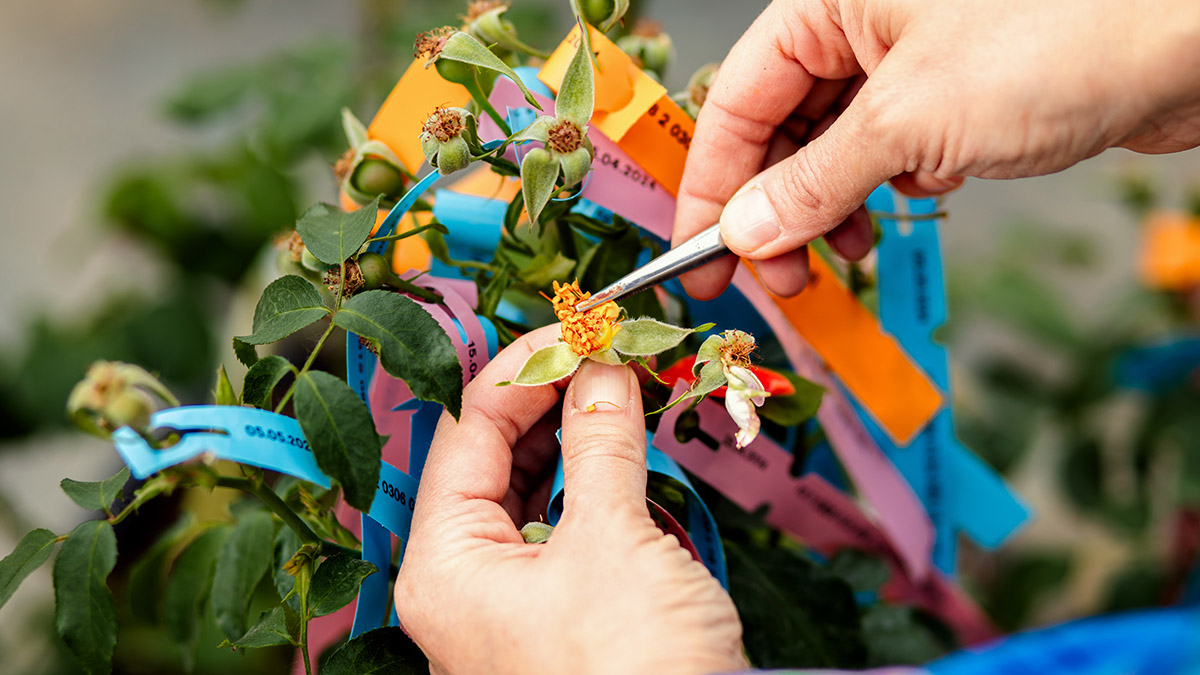Rose Hybridization: How the World’s Most Iconic Flower Has Been Bred Over the Centuries
Plus, we outline the painstaking process of creating new rose cultivars.
May 30, 2024
Roses are the royalty of the floral world and have become a universal expression of life and love. Their beauty captivates our hearts and has been the subject of art, literature, and music for millennia. The exquisite varieties we admire today are products of the ongoing, meticulous process of plant hybridization, a breeding technique in which two parents are artificially crossed to create offspring with desired characteristics.
Early rose hybridization
One hundred fifty wild species of roses and a staggering 30,000 cultivated varieties exist today. All these cultivars originated from crossing and recrossing Asian roses with native European and American species over many centuries, leading to a long, fascinating, and highly complex history.

Dutch horticulturists pioneered during the 15th and 16th centuries the first systematic plant hybridization in the West by crossing wild species of roses that bloom only once a year. They bred and altered the Damask rose, Rosa × damascena, and the Cabbage rose (Rosa × centifolia) in the late 1600s. Modern research reveals that at least four species of wild roses are evident in the DNA of Rosa × centifolia. Only about 12 wild roses were used as parents in those early crosses, which resulted in less than 100 new varieties before 1800. (Today, most rose breeders are still located in Holland.)
In the 1700s and 1800s, two repeat-flowering roses, the China rose (Rosa chinensis) and Manipur Wild Tea rose (Rosa gigantea), were introduced to Europe. These roses had been cultivated in China since ancient times, and European botanists were thrilled to have roses that bloom from spring to fall. They crossed the two plants, and the resulting hybrids, known for their sweet fragrance, were named "tea roses" after the aroma of Chinese tea.
The early 19th century saw the blossoming of French rose hybridization, motivated by Joséphine de Beauharnais, the wife of Napoleon Bonaparte. She fell in love with roses and had the means to populate her gardens at Château de Malmaison with 250 of the recognized roses of the time brought in from growers around Europe. She employed artist Pierre-Joseph Redouté to paint and record the flowers. His published book “Les Roses” inspired the French interest in rose breeding and is still considered an accurate reference today.

Jacques-Louis Descemet, a famous French gardener, popularized Rosa gallica, the French or Gallic rose, which became a parent for future hybridizations. In the latter half of the 19th century, Damask roses were crossed with other species of roses to create "hybrid perpetuals" and with tea roses to make "hybrid teas," the most commonly sold roses in flower shops worldwide.
A pivotal date in rose hybridization is 1867. That year, rosarian Jean-Baptiste André Guillot created the first hybrid tea rose, "La France," a breakthrough that ushered in the beginning of modern roses. All roses developed before 1867 are considered Old Garden roses, which are typically very hardy, disease resistant, fragrant, and bloom once a year. Modern roses, on the other hand, bloom from spring to fall, have larger blooms and a longer vase life, are usually not fragrant, and are less disease resistant.
By 1900, breeders had created around 8,000 new rose varieties. Since then, thousands of new rose cultivars with unique characteristics have been created through hybridization.
Rose hybridization continues to evolve, with commercialization of the flower industry affecting the practice. The most sought-after characteristics breeders look for in roses these days, according to a 1-800-Flowers.com rose supplier, are unique colors, larger bloom sizes with high petal counts, and a long vase life. One byproduct of this is the lack of fragrance of hybridized roses that are sold commercially. This is because the blooms that make up that lovely bouquet sitting on your kitchen counter contain ethylene gas, which hastens flower maturity and decomposition.

Breeders are still developing more types of roses. For example, polyantha roses, very hardy dwarf plants that bloom repeatedly and produce clusters of tiny flowers, come from crossing wild roses, such as Rosa multiflora and Rosa chinensis. Floribunda roses are a cross between polyanthas and hybrid teas that grow in dense clusters and flower from spring to fall. Grandiflora roses, whose high-centered flowers bloom repeatedly and grow on tall, hardy plants, are a fairly new cross between hybrid teas and floribundas. Miniature roses are tiny versions of full-sized plants, and breeders have also developed many varieties of climbing and shrub roses.
Old Garden roses, too, are gaining in popularity. However, they are harder and more expensive to produce, and have a shorter vase and shipping life, which limits them to niche markets.
Breeders follow a meticulous process to create new flowers from hand-picked parents. They work to breed roses with distinctive qualities, such as color, shape of bud and bloom, number of petals, repeat blooming, pest and disease resistance, and hardiness. Geneticists study the possible parent plants in detail to choose Rose A, the pollen parent, and Rose B, the seed parent, that possess the traits hoped for in the resulting hybrid.
First, pollen is collected from Rose A by cutting the stamens (male structures) off a fresh, healthy flower, allowing them to dry slightly and release their pollen. The stamens are also cut off from Rose B's flower so only the pistils (female structures) remain. Pollen is then brushed onto the pistils so it will fertilize the ovules and form seeds. To double-check the hoped-for results of the cross, breeders will also try the opposite pollination by collecting pollen from Rose B and brushing it on Rose A's pistils.

Seeds will form in the rose "hips," and once they mature, they are collected and planted in a nurturing environment. As the seedlings grow to a substantial size, they are hardened off and planted in the ground to mature, bloom, and show the expressed characteristics. Breeders must keep careful records on the pollen, stigmas, rose hips, seeds, seedlings, and cuttings of both parents, along with dates, and cultural and weather information. These all must be labeled precisely so the procedure can be repeated exactly, often thousands of times for four or five years, to get the desired results.
Breeders then choose the best individual rose plants from this cross with the qualities they're looking for and propagate them vegetatively with cuttings to preserve the traits. The plants from these cuttings are distributed and sold around the world.







